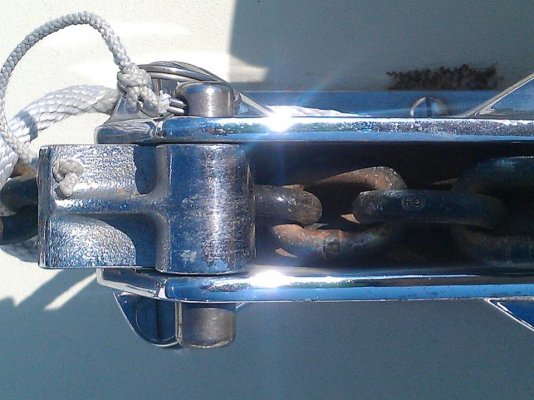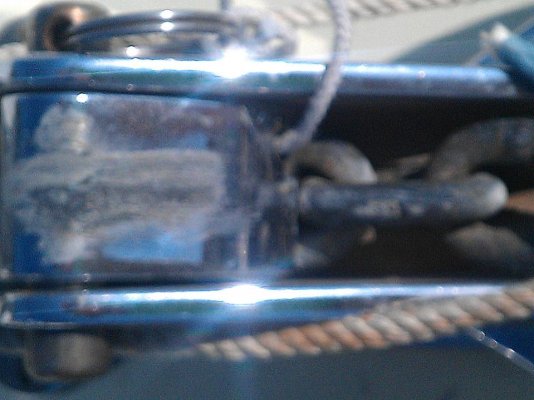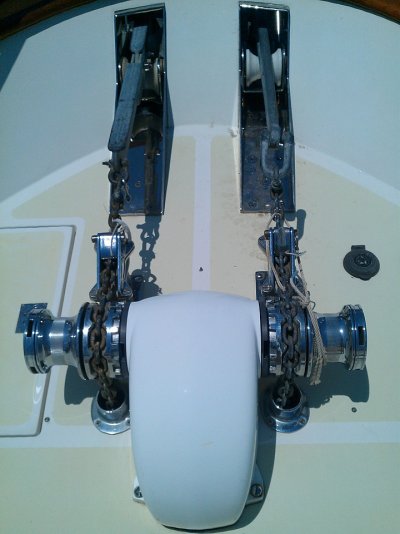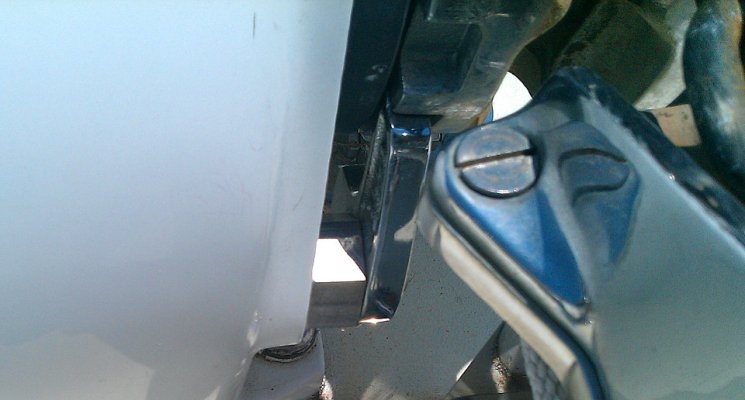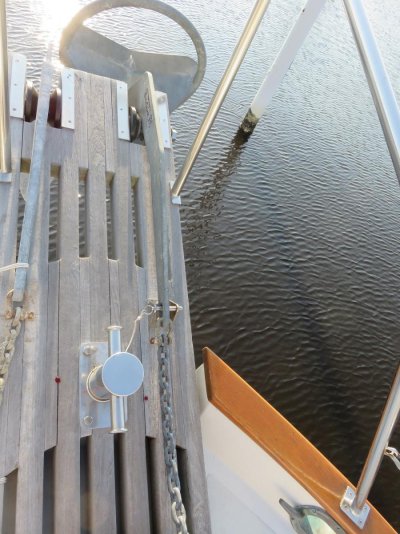menzies
Guru
See photos below.
We have this flap sitting on top of both of our chain set-ups on the bow side of the windlass. We set it open as in the first photo before lowering, but when the chain starts rolling the flap bounces off the chain and closes jamming the chain - second photo.
It could be it is there to stop the chain from running out too fast - but even slowing it down it still bounces and shuts off the chain.
So we have to use the windlass clutch handle to hold it open, which is a PITA. I am thinking of removing them altogether, but before I do that I would like to understand their reason for being there in the first place and whether we are doing something wrong?
We have this flap sitting on top of both of our chain set-ups on the bow side of the windlass. We set it open as in the first photo before lowering, but when the chain starts rolling the flap bounces off the chain and closes jamming the chain - second photo.
It could be it is there to stop the chain from running out too fast - but even slowing it down it still bounces and shuts off the chain.
So we have to use the windlass clutch handle to hold it open, which is a PITA. I am thinking of removing them altogether, but before I do that I would like to understand their reason for being there in the first place and whether we are doing something wrong?

